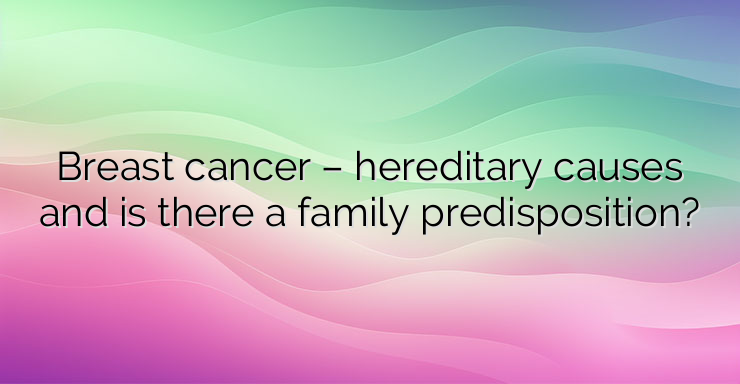Genes Associated with Increased Susceptibility to Breast Cancer So far, two breast cancer susceptibility genes have been identified, called BRCA1 and BRCA2, located on chromosomes 17 and 13, respectively. These two genes are involved in repairing the mutations and damage that occur regularly in DNA. The presence of mutations in one of these two genes disrupts this function and significantly increases the risk of developing breast and ovarian cancer. Mutations in these genes increase the risk of developing: Breast cancer at a young age, usually before menopause. In a woman carrying a mutation in BRCA1 or BRCA2, the risk of breast cancer ranges from 40% to 80%, depending on the type of gene involved, family history of breast cancer, and age; Cancer of both breasts – bilateral breast cancer; Ovarian cancer, mostly after age 40. This risk varies by gene and family history. It is estimated that about 60,000 women carry one of these two genetic mutations. They can be passed on from either parent and greatly increase the risk of developing breast or ovarian cancer later. About 60,000 women were also found to carry a mutation in an unidentified gene that increases the risk of developing breast cancer. The most difficult thing is to identify those patients who are carriers of the mutation. A high number of breast cancer cases in a family may suggest a hereditary predisposition to developing cancer. However, this is not always the case. Likewise, no one in a family may be affected so far, but this does not mean that a person is not a carrier of the mutation, which may have been passed down from the father, for example. Oncological genetic counseling aims to identify and prevent hereditary cancers. By reconstructing the family history, it is decided whether to perform genetic tests. Individual susceptibility criteria Breast cancer occurring before age 36. Bone marrow type of breast cancer a specific type of breast cancer regardless of age at diagnosis. Ovarian cancer diagnosed before age 70. In this case, germ cell tumors and borderline tumors are excluded. Men who were diagnosed with breast cancer before the age of 70, however, this age limit should be discussed on a case-by-case basis. Criteria for familial predisposition At least three cases of breast cancer in the family involving first- or second-line relatives, regardless of age of diagnosis. Two cases of breast cancer in the family related to first- and second-degree relatives, in which at least one of the cases was diagnosed before the age of 40 years. A woman with breast cancer and at least one first- or second-degree relative with ovarian cancer, regardless of age at diagnosis.Other mutations Other rare predisposition syndromes increase the risk of breast cancer – such as the mutation of genes involved in DNA repair and stopping cell reproduction in the event of DNA structure disorders. These are the following genes: T53 – the mutation in this gene is found in people with Li-Fraumeni syndrome, which also increases the risk of developing blood and brain cancers and increases the risk of sarcoma. CHEK2 – the mutation in this gene is found in people with ataxia telangiectasia. PTEN – mutation in this gene is found in people with Cowden syndrome, which also predisposes to colorectal carcinoma and thyroid cancer. STK11, also called PJS or LKB1 – the mutation in this gene is found in people with Peutz-Jeghers syndrome. Having this disease also increases the risk of colorectal cancer, ovarian cancer and testicular cancer. References: https://www.e-cancer.fr/Patients-et-proches/Les-cancers/Cancer-du-sein/Facteurs-de-risque/Predispositions-genetiques https://curie.fr/dossier-pedagogique /cancers-du-sein-les-facteurs-de-risque-hereditaires


Leave a Reply